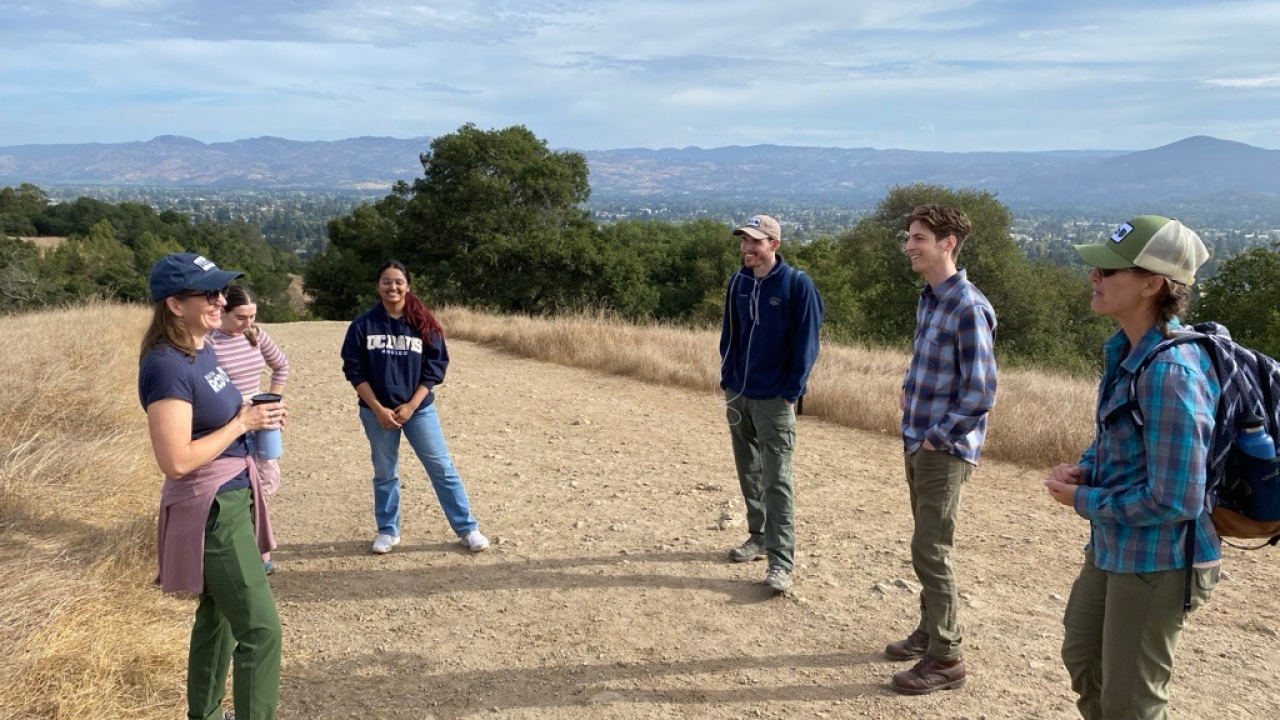
In the Wild: Helen Maschino with the California Department of Conservation
Quick Summary
- Helen is a second-year EPM student and completed her Practicum with the California Department of Conservation over the summer.
My name is Helen Maschino, and I am a second year in the Graduate Program of Environmental Policy and Management at UC Davis. I have a Bachelor of Science degree in Ecology and Evolution from UC Santa Barbara, and now I am specializing in city and regional planning and hoping to work as an environmental planner either for the state government or a private firm. For my EPM practicum, I worked with the California Department of Conservation. The Department of Conservation gives grants to nonprofit organizations, local governments, and resource conservation districts for specific projects, and the Regional Forest and Fire Capacity (RFFC) Team tracks wildfire prevention and forest resilience grants. RFFC is a block grant program that builds capacity at the local, sub-regional, regional, and state scale to respond to the wildfire crises through project development, pure capacity building, and regional organizing. A major deliverable that grantees and partners must produce is a Regional Protection Plan (RPP). My project consisted of working with the Regional Forest and Fire Capacity Team to organize information about their grantees’ planning processes so the agency could better understand its grantees’ points of view and communicate expectations for their RPPs.
The purpose of my project was to increase understanding between the RFFC Team’s grant managers and their grantees. Some grantees were struggling to conceptualize what the agency meant when they asked them to create an Regional Protection Plan, and the agency wanted to understand how existing plans influence RPP development, and how an RPP would interact with other existing plans. I worked to find and compile all the existing wildfire prevention and forest resilience planning documents for a set of regions that correlated with specific grantees. I focused on Marin, Santa Barbara, San Mateo/Santa Cuz, San Diego/Orange County, Inland Empire, and Los Angeles/Santa Monica, first doing my own research and then conducting informational interviews with the grantees in all those regions to fill in any gaps. I also interviewed other state agency partners, including Cal Fire and California Department of Fish and Wildlife, to assess what other kinds of plans should be considered important.
My deliverable is an Inventory of Plans that I created on Airtable. This inventory consists of all the regional wildfire prevention and forest resilience plans I found for each region of focus, denoting their objectives and goals, authoring agencies or organizations, and level of public engagement in the planning process. This deliverable is meant to be a living document that the agency can reference and update in the future, since my time at the agency was very short compared to the long-term scale of the Regional Priority Plan project. The intention is that the RFFC Team will continue populating this inventory with information from other regional grantees that I could not get either due to time and scoping constraints or because they were not far enough along in their RPP process to answer specific questions about it yet. By establishing more transparency regarding the RPP process and agency’s expectations between the RFFC grant managers and their grantees, the grant process should become more streamlined.
